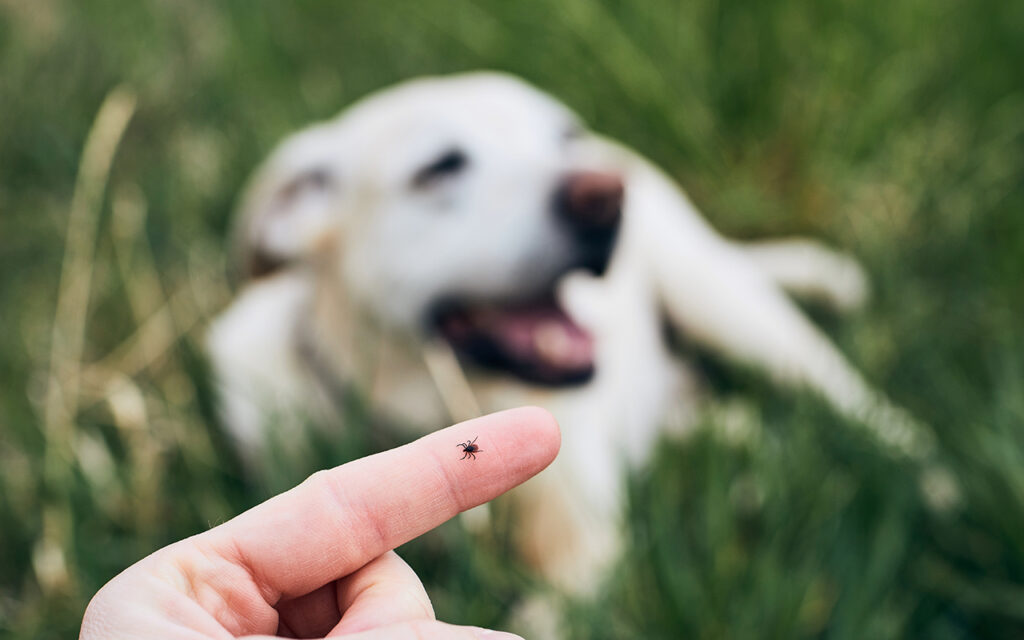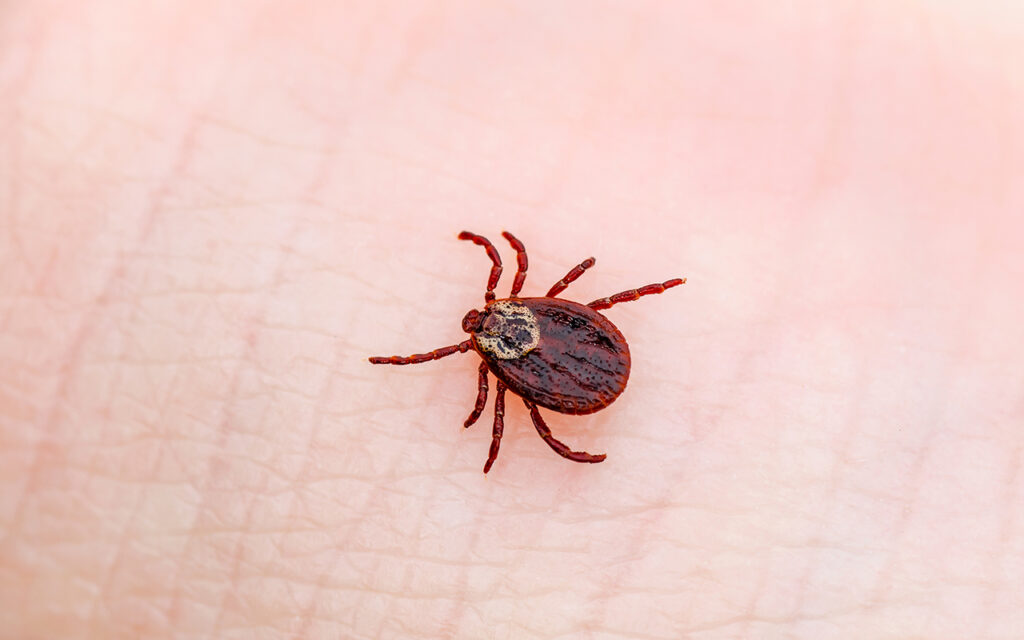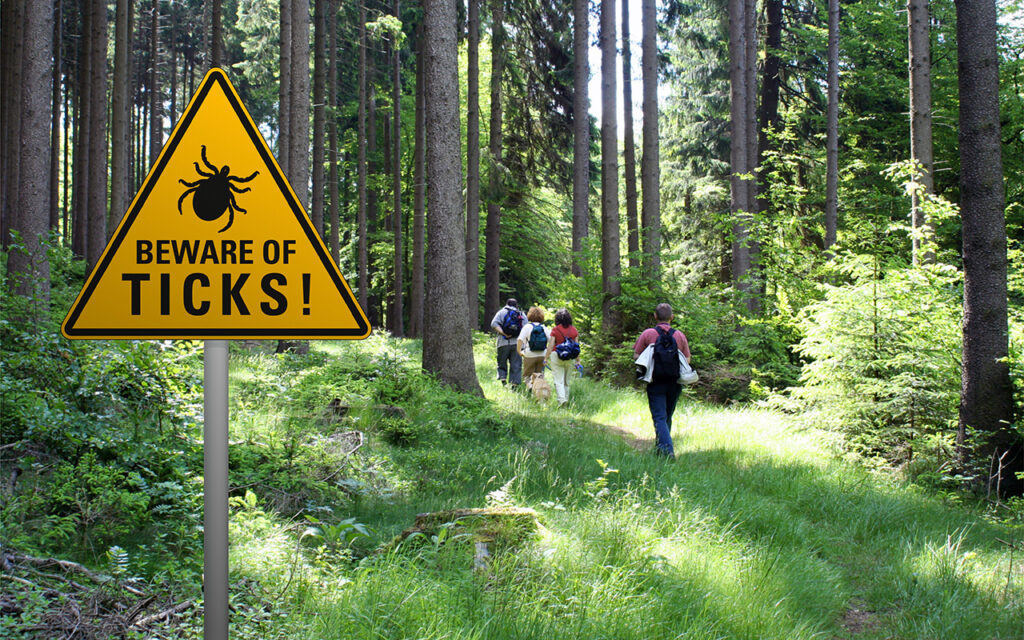Lyme disease, a bacterial infection, is primarily transmitted to humans through the bite of an infected tick. This disease was first identified in the 1970s in Lyme, Connecticut, hence its name.
While Lyme disease is rarely fatal, it can lead to severe health complications if left untreated. Early symptoms often include a distinctive circular rash, resembling a bullseye, around the bite site, accompanied by fever, chills, fatigue, and muscle aches. If the infection progresses, it can spread to the joints, heart, and nervous system, causing debilitating conditions such as arthritis, heart palpitations, and neurological disorders.
Prompt medical attention and antibiotic treatment are crucial for effective management and prevention of long-term consequences, so it’s important to know the early symptoms of this illness.
How is Lyme Disease Transmitted?

Lyme disease is primarily spread through the bite of an infected tick. These tiny arachnids thrive in wooded and grassy areas, making hikers, campers, and gardeners particularly susceptible. The deer tick, prevalent in regions like Lyme, Connecticut, is the most common carrier of the Lyme disease bacterium.
Ticks tend to attach themselves to their hosts in inconspicuous areas, such as the scalp, armpits, and groin. It’s important to note that the bacteria is typically not transmitted until the tick has been attached for 36-48 hours.
To minimize your risk of Lyme disease, it’s advisable to take precautions when spending time outdoors. Check yourself for ticks regularly, especially after spending time in wooded or grassy areas. Wear long sleeves, long pants, and insect repellent to deter ticks. Additionally, staying informed about local weather conditions and tick activity can help you plan outdoor activities accordingly.
Preventing Lyme Disease

To minimize your risk of contracting Lyme disease, consider these preventive measures:
- Avoid Tick-Infested Areas: Minimize exposure to heavily wooded or grassy areas, especially during peak tick activity seasons. These environments are ideal breeding grounds for ticks.
- Protective Clothing: When venturing outdoors, wear long-sleeved shirts, long pants, and a hat. Tuck your pants into your socks to create a barrier against ticks.
- Insect Repellent: Apply insect repellent containing DEET or picaridin to exposed skin and clothing. Follow the product’s instructions for safe and effective use.
- Regular Tick Checks: Perform thorough tick checks on yourself, family members, and pets after spending time outdoors. Pay close attention to areas like the scalp, armpits, and groin.
- Prompt Removal of Ticks: If you find a tick attached to your skin, remove it carefully using tweezers. Grasp the tick as close to the skin as possible and pull straight up with a steady motion.
- Shower Soon After Outdoor Activities: Showering promptly after spending time outdoors can help dislodge and wash away any unattached ticks.
By following these guidelines, you can significantly reduce your risk of Lyme disease and enjoy your outdoor activities with peace of mind.
Treating Lyme Disease

If you experience symptoms such as fatigue, headaches, or a characteristic bullseye rash, it’s crucial to seek medical attention promptly, even if you haven’t spotted a tick. Early diagnosis and treatment are essential to prevent the disease from progressing and causing more severe complications.
A healthcare provider can administer a Lyme disease test to confirm the diagnosis. If positive, a course of oral antibiotics, typically for two to three weeks, is often prescribed. Unfortunately, there is currently no vaccine available to prevent Lyme disease.
In cases where the infection has progressed to more severe stages, intravenous antibiotics may be necessary to deliver a higher concentration of medication directly into the bloodstream. This is particularly important to prevent the bacteria from spreading to the joints, heart, and nervous system.
Remember, early detection and treatment are key to a successful recovery. If you live in or frequently visit areas with high rates of Lyme disease, it’s wise to be aware of the symptoms and testing options.
The Fatal Risk of Untreated Lyme Disease

While Lyme disease is rarely fatal, untreated cases can lead to severe and potentially life-threatening complications. In rare instances, the infection can progress to Lyme carditis, a condition that affects the heart.
Several tragic cases highlight the dangers of delayed diagnosis and treatment. In 2012, a 42-year-old Massachusetts man succumbed to sudden cardiac arrest due to Lyme carditis. Despite experiencing symptoms like fatigue, joint pain, and heart palpitations, he unfortunately did not seek medical attention.
Similarly, a 17-year-old New York boy died in 2013 from fatal heart rhythm disturbances caused by Lyme carditis. He had been experiencing dizziness and shortness of breath, but the underlying cause was not recognized until after his death.
In another case, a 37-year-old woman passed away from long-term neurological complications resulting from misdiagnosed Lyme disease. The delayed diagnosis and subsequent progression of neuroborreliosis led to irreversible damage to her nervous system.
In 2013, the CDC reported three cases of sudden cardiac death among young individuals who were later found to have Lyme carditis. These cases underscore the importance of early diagnosis and treatment, as even seemingly healthy individuals can be affected by this serious complication.
It’s crucial to remember that these are isolated incidents. Most individuals with Lyme disease recover fully with appropriate antibiotic treatment. However, these tragic cases serve as a stark reminder of the potential consequences of neglecting symptoms or delaying medical attention.
Stay Safe and Protected from Lyme Disease

While Lyme disease is rarely fatal, it’s important to take precautions to minimize your risk of infection and to be aware of potential symptoms.
When spending time outdoors, especially in wooded or grassy areas, wear protective clothing, such as long sleeves, long pants, and a hat. Use insect repellent containing DEET or picaridin to further deter ticks. Regularly check yourself for ticks, paying close attention to areas like the scalp, armpits, and groin.
If you experience flu-like symptoms, a distinctive rash, or unusual neurological symptoms, seek medical attention promptly. Early diagnosis and treatment are crucial to prevent the disease from progressing and causing severe complications.